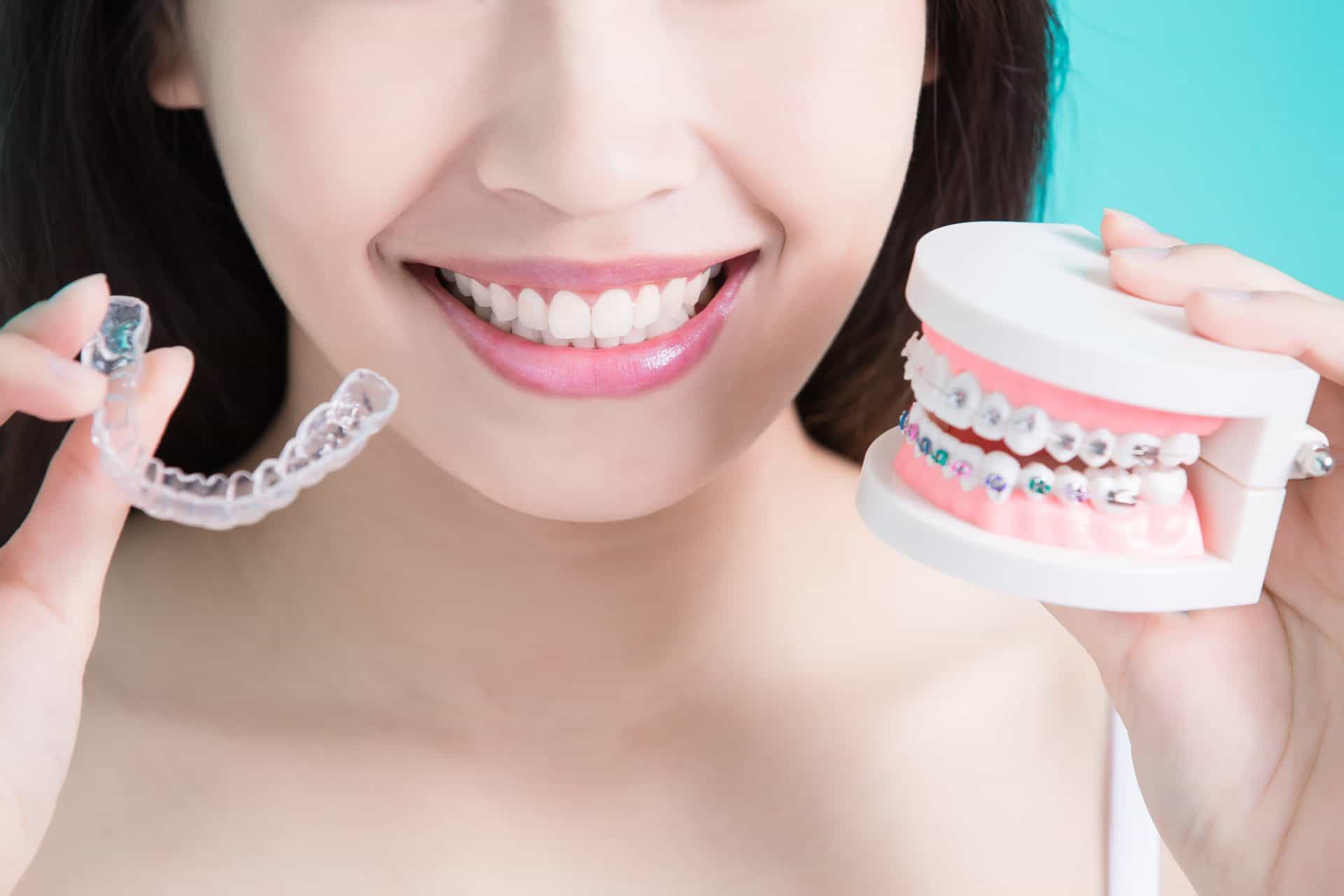“Better” is a deceptively complex word and notion. Which is better: traditional braces or Invisalign in Yaletown? Deciding which option for straightening your teeth is “better” in any particular set of circumstances requires the consideration of a lot of different factors, such as the current condition and position of your teeth, your personal goals, lifestyle, age, personality, prior medical history, timeline and budget. The easiest way to answer such a complex question as “Which is better?” is to point out each option’s key differences, advantages and disadvantages. So, without further ado…
What are The Respective Benefits of Invisalign and Braces?
| Invisalign | Traditional braces |
| Invisalign’s aligners are removable | Braces are a successful treatment option for almost all patients and teeth alignment issues, including minor and complex situations |
| The thermoplastic material of which the aligners are made is smooth and will not poke against or threaten to injure your cheeks or lips | Today’s braces offer more options than “traditional” braces, including tooth-coloured ceramic brackets and low-profile wires that are less obvious |
| The force imposed on teeth by Invisalign’s aligners is more gentle than the force imposed by traditional braces, meaning you may experience less discomfort with Invisalign near you than braces | Braces are suitable for patients as young as seven years old and at every stage in the development of teeth. |
| Invisalign’s aligners are practically invisible (as long as you take care of them effectively), so you won’t experience some of the common stigma associated with wearing braces | There is a wider range of add-on implements available to address changing situations that arise in orthodontic work — particularly in treating children — with traditional braces. Those supplemental appliances include things like space maintainers and palate expanders |
| Invisalign in Downtown Vancouver is an appropriate option for approximately 70% of patients with a wide variety of teeth alignment issues | |
| Follow-up appointments at our dentist in Yaletown will be shorter because there will be no wires to remove or brackets to adjust | |
| You’ll be able to eat exactly what you want without interference | |
| Invisalign’s treatment plan uses computerized three-dimensional scanning to produce simulated projections of your final results |
What are The Disadvantages of Braces and Invisalign?
| Invisalign | Traditional braces |
| The freedom to remove your aligners can be hard to resist. Patients must be disciplined enough to wear their aligners for 22 hours daily to stay on track. | The brackets and wires can’t be removed (While that’s largely considered a drawback compared to Invisalign, it also means that you won’t be tempted to remove them either. As a result, they work constantly.) |
| Although more options are available than in the past, they’re not discrete or subtle | |
| Braces can be difficult to keep clean and food-free (meaning some foods may be off-limits while wearing braces). They also make keeping your teeth clean more difficult |
Which is Better?
Mature patients with the discipline necessary to be able to benefit from the advantages of Invisalign find that Invisalign is the most comfortable solution that fits their lifestyle. Traditional braces are a highly effective and cost-effective alternative for younger patients or patients with more complex orthodontic issues. Where do your circumstances land in this analysis? Don’t rely on this checklist to answer the core question, “Which is better?” Instead, use this as a checklist to guide your conversation with our dentist near you to work through which option is most appropriate for helping you to achieve your teeth-straightening goals.
